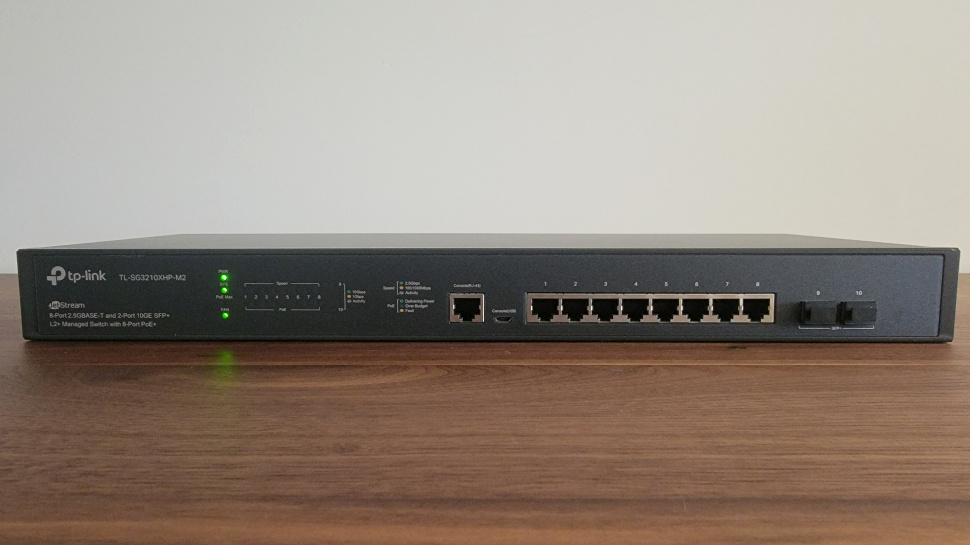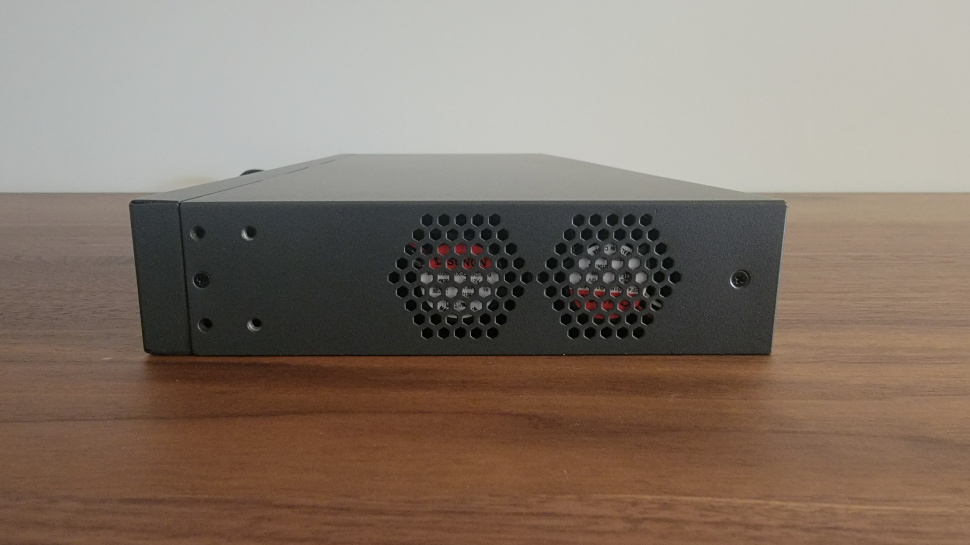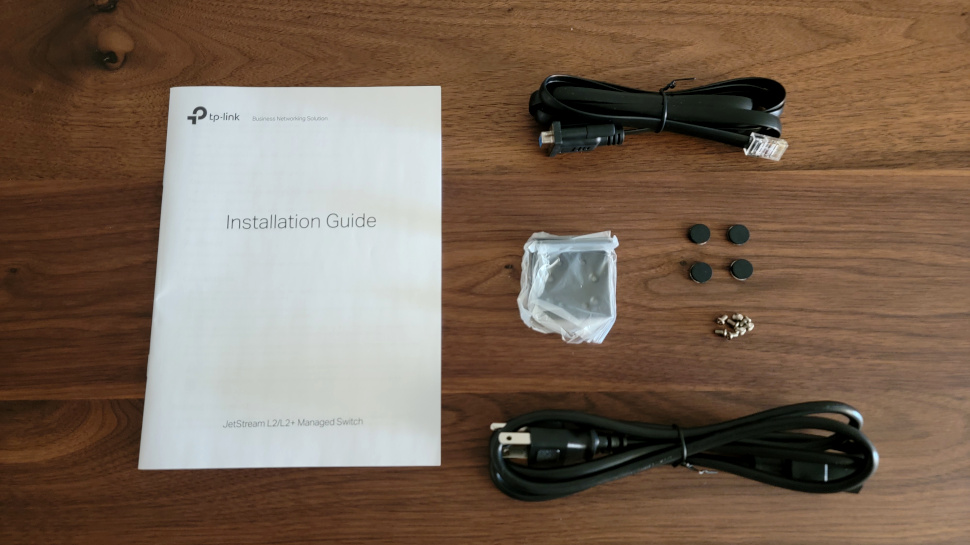TP-Link TL-SG3210XHP-M2
The TP-Link TL-SG3210XHP-M2 is a slim and speedy managed network switch supporting Power over Ethernet (PoE) on all its eight 2.5Gb copper ports. Two extra 10Gb SFP+ sockets can seamlessly extend the number of ports through additional units. The front panel displays ports and system status using LEDs, while a micro-USB allows connecting a host PC to the switch’s console.
The switch is easy to deploy and maintain through TP-Link’s Omada Cloud infrastructure. The power consumption without connections is around 20W, while PoE can provide up to 240W to connected Ethernet devices. It isn’t the quietest of switches, with two fans working continuously, albeit with speed control.
TP-Link TL-SG3210XHP-M2: Pricing and availability
The TP-Link TL-SG3210XH-M2 costs around $400 / £360 / AUD$600. Other models exist with the same port configuration and management but with different PoE power budgets, starting from 61W at around $110 / £100 / AUD$150.

TP-Link TL-SG3210XHP-M2: Design
The TL-SG3210XHP-M2 managed switch ships with mounting brackets and four rubber feet, making it suitable for either rack or desk installation. The unit measuring 44cm x 18cm x 4.4cm, comes with a serial cable, a power cable, and a user manual. Two 40mm 12V fans make up the forced cooling system, generating around 45dB at one meter when idle.
On top of having a universal RJ45 serial connector for the switch console, TP-Link has provided a micro-USB port on the front, giving the ability to talk to the command interface using newer PCs lacking an RS232 port. Both ports cannot be used simultaneously, with the micro-USB taking precedence over the RJ45 port.
All eight front-facing RJ45 connectors offer multi-gigabit Ethernet, in addition to two 10Gb SFP+ ports that can connect to another switch. Each Ethernet port can support up to 30W over PoE with a maximum transfer rate of 2.5Gb. The TL-SG3210XHP-M2 can upgrade legacy 1Gb networks wired using CAT6 Ethernet cable with minimum fuss.
The unit has a total switching capacity of 80Gbps, twice the aggregated bandwidth of all ports. The switch won’t have any speed drop even when all ports are churning simultaneously. The connection speed, port activity, and PoE status are shown on an array of eight LEDs, while the SFPs have one each for speed and port activity. Four additional LEDs give the switch status on the front panel and should be all green except for the normally-off PoE Max indicator.

TP-Link TL-SG3210XHP-M2: In use
The switch is compatible with TP-Link’s Omada Cloud management service and provides remote access to the device configuration webpage. For the Omada Cloud to work correctly, a hardware controller or dedicated computer has to be on the same network as the TL-SG3210XHP-M2. The Omada Cloud can monitor and configure the switch and other devices from TP-Link, such as a Wi-Fi access point.
The managed switch allows the automatic rebooting of non-responsive PoE equipment such as cameras. This feature works with the switch’s ability to monitor network activity in real-time using ping, and any timeout from one camera can be detected quickly. Since all PoE devices are under the control of the switch, it can power cycle and possibly recover malfunctioning remote units without user intervention.
The configuration webpage gives a quick overview of the switch’s operation state, including ports enabled and the current firmware version. Thanks to an 800MHz ARM CPU and 128MB of RAM, metrics such as port bandwidth utilization are displayed without lag while the web interface is very responsive.
Quality of Service (QoS), a feature often overlooked, can increase the effectiveness of a network. The TL-SG3210XHP-M2’s QoS engine classifies traffic according to criteria such as voice data, priority ports, or per port maximum bandwidth. The QoS can keep packets deemed essential while dropping others that are less important during network congestion.

TP-Link TL-SG3210XHP-M2: The competition
Network switches with PoE and 2.5GbE connectivity are the norm, along with the ability to control the switch from the Internet. The TL-SG3210XHP-M2 offers excellent value for the number of ports provided and the 240W power budget available to PoE devices. Cisco and Engenius offer similar models but cost almost twice as much as the TP-Link model.
The Cisco CBS350-8MGP is an eight ports managed switch with two SFP+ connectors but only supports 2.5Gbps on two ports. The total power available for PoE is 124W which is half of what the TL-SG3210XHP-M2 provides, while the Cisco model costs over 50% more than the TP-Link switch.
TP-Link TL-SG3210XHP-M2: Final verdict
The TP-Link TL-SG3210XHP-M2 managed switch rivals with more expensive models while offering similar, if not better, features. It supports up to eight 2.5Gb Ethernet ports and provides two extra SFP+ connections for future expansion. The power consumption is a meager 20W and can offer an additional 240W to connected PoE devices. The switch supports basic Layer 2 and 3 operations with QoS, while units powered through PoE can automatically restart when an issue is detected.
The main disadvantage of the switch is the powerful but loud fan that hinders its deployment in an office environment. The fact that it needs a hardware controller to connect to the cloud and be accessible anywhere on the Internet is also a limitation. The TL-SG3210XP-M2 is still one of the cheapest network switches covered by a two-year warranty and with good web support.
0 comments:
Post a Comment